Select the Right Monitor
Whether or not you are a critical PC gamer or a casual after-hours warrior, your {hardware} will be the pivot level between victory and defeat. To get the most out of the latest first-person shooter (FPS), sports activities, racing, and different fast-action video games, you will not solely want a gaming PC with a robust graphics card, but also a monitor that may render the motion without subjecting you to blurred pictures, flicker, tearing, and different motion artifacts.
On this information, we'll show you how to select a show that offers you an edge over your opponents whereas delivering clean, immersive gaming expertise. These are the elements to contemplate when selecting a gaming monitor. Learn on for these, as well as our present favorites derived from testing.
Panel Measurement & Decision
Relating to gaming monitors, larger is nearly at all times higher. That stated, in some choose instances you will wish to hold the size of your monitor at 27 inches or below.
In the event you've watched any esports tournaments over the previous few years, you've got in all probability observed that each one the gamers are taking part in on screens smaller than that measurement. (A 24-inches appears to be the candy spot.) Why? In the event you're taking part in an extremely aggressive title reminiscent of Counter-Strike: World Offensive or League of Legends, having a smaller display screen means you'll be able to hold the monitor nearer to your eyes whereas additionally retaining extra of the body in view. Having the ability to see each aspect on the display screen directly is a crucial benefit in aggressive multiplayer surroundings. The bigger you go in display screen measurement, the harder it's to maintain each enemy combatant in your peripheral imaginative and prescient.
The Best Gaming Monitor Offers This Week*

You probably have the room and do not care a lot in regards to the aggressive gaming world, though, a bigger display screen offers loads of area on your onscreen characters to stretch out and gives the chance to transcend full excessive definition. Many more recent fashions are Huge Quad Excessive-Definition (WQHD) displays with most resolutions of two,560 by 1,440 pixels (additionally dubbed "1440p"). The upper pixel relies on offers a lot sharper imagery than full HD, however, you will want a fairly highly effective graphics engine to play the most recent video games on the increased decision, particularly if in case you have all the consequences enabled.
This holds double for 4K Extremely-Excessive Definition (UHD) displays, with a decision of three,840 by 2,160 pixels, such because the Acer Predator X27. If the desk area is a matter, there are many 24-inch displays on the market, however, with these, you will be restricted normally to a 1,920-by-1,080-pixel decision.
You probably have numerous area, and cash isn't any object, even larger displays can be found. A 30-inch 4K UHD monitor will ship a shocking image with a superb decision; you'll be able to go all out with a 34-inch ultrawide monitor with or with no curved panel, or you'll be able to decide up one thing bigger nonetheless. (We have examined shows as much as 65 inches.)
Ultrawide displays sometimes have a 21:9 facet ratio (versus the same old 16:9) and supply a lot wider discipline of view than an ordinary widescreen monitor, however, they take up quite a lot of room. A curved-panel ultrawide monitor has sufficient of a curve to make you're feeling a bit nearer to the motion, and in some video games may even provide you with an aggressive edge.
Battle-royale titles like PlayerUnknown's Battlegrounds and Apex Legends each assist a full 21:9 decision. What this implies: Somewhat than merely squashing and stretching the picture like some video games do, these video games (and others that natively assist 21:9) will truly show extra of the battlefield on both aspects of the display screen than you'd see on a 16:9 monitor. Battle-royale gamers particularly will profit from this elevated actual property. A participant on a 16:9 panel might not see an enemy standing on a hill method to the proper within the periphery, however, a 21:9 participant may be capable of spot the hazard without having to show their character.
Panel Know-how
You may see a number of predominant monitor-panel applied sciences utilized in varied gaming displays, and every one has its pluses and minuses.
Twisted nematic (TN) panels are essentially the most inexpensive and are common amongst avid gamers as a result of they provide quick pixel response occasions and refresh charges. Their greatest disadvantage? They're inclined to paint shifting when considered from an angle.
READ: Best Fitness Trackers Buy for 2020 - DID Technology
READ: Best Fitness Trackers Buy for 2020 - DID Technology
Vertical alignment (VA) screens are recognized for his or her excessive native distinction ratios, strong colors, and talent to show deep blacks, however, they're additionally recognized to supply noticeable ghosting results, which may harm gaming efficiency. (It will depend on the mannequin, and that's the place critiques are available.)
In-plane switching (IPS) panels present the perfect all-around coloration high quality, robust grayscale efficiency, and vast viewing angles, however, they cannot match the pixel response of TN panels and are topic to movement artifacts. They're the perfect general-use panel kind, however, discriminating avid gamers or aggressive esports sorts might take situation with IPS.
This pattern is starting to vary, nevertheless. LG has developed a brand new IPS panel (dubbed "nano IPS") that claims 1-millisecond gray-to-gray response time with overdrive turned on, and the primary monitor to function this expertise is already in the marketplace, the LG 27GL850.
Early critiques have famous that the ghosting and artifacts is considerably worse on this mode, although, which may negate any advantages {that a} 1ms response time would deliver with it. With the 27GL850 appearing as a pioneer, nevertheless, we think about these points will get ironed out as time goes on.
As a result of TN, VA, and IPS every has its personal such traits, we suggest taking a look at samples of every at your native electronics mega-mart, if attainable, to get a concept of the "really feel" and which particular compromises matter the least to you. Additionally, keep in mind that not all panels of a given kind are created equal, so seeing the precise show earlier than you in individual, if attainable, is at all times good.
Pixel Response, Enter Lag & Refresh Fee
Gaming displays ought to have a quick pixel response time and an excessive refresh charge, the latter commensurate with the body charges your PC can push. (Extra on that in a second.)
Essentially the most generally used pixel response spec is gray-to-gray, which is measured in milliseconds (ms) and signifies the time it takes a pixel to transition from one shade of grey to a different. (A couple of firms nonetheless use the older black-to-white measurement.) A low pixel response will assist eradicate the smearing of transferring photos and supply a smoother total image than a better pixel response. A gray-to-gray response of 2ms or much less is good, however, even a 4ms gray-to-gray response is usually satisfactory for gaming.

Enter lag is one other vital issue to contemplate when shopping for your subsequent gaming monitor, particularly for aggressive gamers. Enter lag refers back to the period of time it takes for a motion (say, a keypress in your keyboard or a mouse click on) to look onscreen. Beginning in mid-2019, we have been testing all our displays utilizing the HDFury 4K Diva, and contemplate any displays that rating below 5ms to be matched for gamers who depend on lightning-quick reflexes to finest their opponents.
Then there's a refresh charge. A monitor's refresh charge refers back to the time (per second) it takes to redraw your complete display screen and is measured in hertz (Hz). Most traditional LCD displays (together with some gaming panels) have a peak 60Hz refresh charge, which suggests the display screen is refreshed 60 occasions per second.
Quick-moving photos might seem blurry at this charge, or the panel might undergo from display screen tearing, an artifact that happens when the monitor shows items of two or extra display screen attracts on the similar time. (This may be alleviated by a synchronization method referred to as variable refresh charge, extra about which in a second.)

The pattern in gaming panels during the last yr or so is the wave of fashions from all main gaming-LCD makers that includes refresh charges increased than 60Hz. The most typical refresh-rate increments we are actually seeing in these so-called "excessive refresh" gaming shows are 75Hz, 120Hz, and 144Hz, with panels as much as 240Hz now in the marketplace.
Within the first half of 2020, 240Hz panels are nearly fully 1080p (other than the Omen X 27), whereas 1440p panels high out at 165Hz, and 4K fashions max out at 144Hz. That is as a result of throughput limitations of the 2 hottest cable applied sciences, HDMI 2.zero and DisplayPort 1.4b. This could begin to change in 2020 when the HDMI 2.1 spec is finalized.

Video games that run at body charges increased than 60 frames per second (fps) can profit from considered one of these displays. The upper refresh charge can present movement extra fluidly when it's in sync. Esports gamers who specialize in video games that aren't too demanding on a video card (and that due to this fact run at very excessive body charges) will particularly wish to take notice.
Simply because you will have an excessive refresh charge, nevertheless, that doesn't imply that your gaming graphics will essentially be freed from tearing and artifacts. This leads us to the opposite large PC-gaming-centric pattern in flux in late-model gaming displays: G-Sync and FreeSync.
G-Sync & FreeSync: Applied sciences in Flux
The most recent gaming displays use synchronization expertise to assist cut back tearing and different movement artifacts whereas reducing enter lag. Shows outfitted with Nvidia's G-Sync or AMD's FreeSync expertise hand off management of the display screen's refresh charge to the graphics card or chip (as an alternative of the monitor), which permits the show to function at a variable refresh charge (VRR) in keeping with what the cardboard is able to push at any given second. The result's clean gaming expertise, with decreased enter lag and a scarcity of tearing.
Be aware, nevertheless, that G-Sync and FreeSync displays require a G-Sync- or FreeSync-compatible graphics card with a DisplayPort 1.2 or HDMI 2.zero output (an Nvidia card for G-Sync, an AMD card for FreeSync).
At CES 2017, AMD introduced an enhanced model of FreeSync, FreeSync 2, and higher-end displays have been transitioning to it since 2018. FreeSync 2 is all about the identical primary intention as FreeSync—synchronizing the body charge of the sign from an appropriate AMD graphics card with a monitor's refresh charge—nevertheless, it provides HDR assist, low enter lag (aka latency), and assist for low-frame-rate compensation.
The latter is the power to sync the body charge of a GPU with that of a monitor, even when the GPU's body charge falls beneath the minimal body charge of the monitor. Few video games that benefit from FreeSync 2's options are but out there, however the displays themselves have to fulfill AMD requirements reminiscent of HDR functionality.
In the meantime, the form of VRR from the Nvidia aspect of issues took an enormous flip early this yr. At first of 2019, Nvidia launched a brand new model of its driver for its GeForce playing cards that permits customers of FreeSync displays to activate G-Sync within the GeForce driver software program.
The outcomes might fluctuate, however, in essence, house owners of FreeSync panels can now check out VRR with an Nvidia card. Nvidia has additionally prolonged a kind of G-Sync certification to a choose group of FreeSync displays. Out of 400 FreeSync displays that Nvidia examined, roughly 50 at present meet the corporate's customary—that's, no tearing, no ghosting, no different artifacts throughout VRR gameplay, and the power to assist a variety of refresh charges (for instance, 60Hz to 144Hz).
These fashions on the hyperlink above are dubbed "G-Sync Appropriate." Nvidia has but to check 100 or so extra FreeSync displays and invitations house owners of FreeSync displays that haven't but been validated however who've obtained the driving force replace to attempt to swap G-Sync on from the Nvidia management panel and see if, and the way nicely, its adaptive sync works.
G-Sync has gotten extra difficult in one other means, too. The addition of the G-Sync Appropriate class brings the variety of G-Sync monitor compatibility ranges to a few. G-Sync Appropriate is the bottom tier.
Within the center are these displays that meet Nvidia's conventional G-Sync requirements, containing specialized circuitry to assist the usual: They've handed some 300 image-quality checks and are able to work over the complete VRR vary.
The highest tier is G-Sync Final (previously often known as G-Sync HDR), which along with assembly the G-Sync requirements combines high-end options reminiscent of excessive luminance (1,000 nits) and a refresh charge of at the very least 144Hz. One of many handfuls of panels that qualifies as G-Sync Final is the Acer Predator X27, however, we count on to see extra, particularly with the introduction of 65-inch Massive Format Gaming Shows (BFGDs) from HP and others. (See our evaluation of the primary of those, the HP Omen X Emperium.)
HDR: Brightness Deluxe
HDR expertise is not only for making motion pictures and TV reveals look good; it might additionally flip a dimly lit, washed-out sport into one thing vibrant, stuffed with distinction, with sharply outlined edges round each a part of the surroundings. There are 4 ranges of HDR in displays proper now: DisplayHDR 400, DisplayHDR 600, DisplayHDR 1000, and DisplayHDR 1600. The determine refers back to the variety of nits, or the brightness degree, that the show must be able to max out at.
However, although there are many HDR 4K displays to select from lately, the implementation of HDR inside Home windows remains to be...missing, to say the least. If it does work the best way its alleged to, apps which can be appropriate with Home windows (these from the Home windows App Retailer appear to work higher with HDR compatibility than these discovered outdoors that ecosystem) will get the HDR remedy, and so will Home windows itself.
Whereas consoles just like the Xbox One X and PS4 Professional do HDR flawlessly on nearly all their video games, the PC nonetheless lags behind by way of the variety of sports titles that assist HDR, and solely some displays assist it. Proper now, the listing of video games on PC appropriate with HDR is slightly over 100 in all, although how nicely the tech is carried out varies on a case-by-case foundation. That mentioned, when carried out nicely (particularly in titles developed for the reason that expertise took off in gaming displays across the finish of 2017), HDR provides a hanging facet to gameplay.
In testing on the PCMag Labs, we have discovered DisplayHDR 400 is mostly ample to get a pleasant impact going, however, the DisplayHDR 1000 and 1600 specs take the expertise to a wholly new degree.
Can It Create?
Once we check displays for his or her PC gaming capabilities, we additionally take a look at what they'll do usually use instances like watching movies or searching the net, in addition to how nicely they'll reproduce correct coloration in numerous completely different chromaticity checks.

sRGB acts like a baseline for the way all content material on the web will seem, whereas DCI-P3 is a measure of how nicely a monitor does at reproducing the color spectrum that movies and TV reveals are most frequently broadcast in. Lastly, there's Adobe RGB, which is used as an indicator for the way nicely a monitor may do at reproducing correct coloration in a software program like Adobe Photoshop.
Coloration accuracy can be measured by way of a determined often known as "Delta E," which expresses the gap between the "most correct orange," and the orange that the monitor shows. If you wish to watch (or produce) quite a lot of motion pictures in your gaming monitor, DCI-P3 is the determine you have to be essentially the most involved about; the Delta E and Adobe RGB numbers are the first figures for creators who work in pictures, 3D design, sports production, modeling, or different artistic fields where color accuracy is important.
Video Inputs & Other Options
A gaming monitor must be outfitted with a wide range of video inputs, so you'll be able to keep related to a number of PCs and gaming consoles. Twin HDMI ports are very best, for the reason that main sport consoles use HDMI, whereas most high-end graphics playing cards supply DisplayPort and HDMI connectivity. (DVI is usually nonetheless there, nevertheless it's falling away within the highest-end playing cards.)
A couple of excessive fanatic displays, such because the Acer Nitro XV3, truly require two DisplayPort 1.4b cables plugged in directly to pipe a 4K 144Hz sign from a PC to the show. To this point, that is the one mannequin we have seen that has this requirement to get the complete sign, so in case you plan on shopping for this show particularly we suggest ensuring that your GPU has two DisplayPort 1.4b outputs to assist it first.
USB ports are additionally a pleasant feature, as they make it simple to hook up with gaming controllers, mice, thumb drives, and different exterior peripherals, and in lots of instances, you'll be able to cost gadgets when they're related to a USB port. Aspect-mounted USB ports make it simple to plug and unplug peripherals without having to succeed in across the again of the monitor.
A strong speaker system with a built-in subwoofer will improve your gaming expertise and preserve desktop area, and a stand with peak, tilt, and swivel changes gives ergonomic consolation for these all-night frag-a-thons. That mentioned, in case you are likely to sport with a gaming headset, a conveniently located USB port is likely to be extra invaluable than a middling built-in audio system.
Lastly, there's RGB lighting. Whereas some buyers cannot stand the stuff (to this author, it washes out the sport on the display screen), loads of avid gamers on the market prefer to sync up their gaming monitor to the remainder of their RGB-ness on their PC case, on their video card, or pulsating off their RAM. (Heck, you'll be able to even discover RGB SSDs lately.)
Some of the applications that may sync your monitor to the remainder of your RGB setup embrace Asus Aura Sync, Acer DisplayWidget, and MSI Mystic Gentle. Additionally, extra superior choices like SteelSeries' GameSense work in tandem with displays just like the MSI Optix MPG27CQ to show in-game data like your ammo and health ranges by way of RGB LED strips on the monitor.
The number of GameSense-compatible apps and video games is kind of restricted proper now (solely seven incomplete), nevertheless it's nonetheless a neat look right into an attainable way forward for practical, not simply ornamental, RGB.
So, Which Gaming Monitor Should I Purchase?
Display screen size, panel technology, and options will decide how a lot you will pay for a gaming monitor. You'll be able to snag a 24-inch mannequin that makes use of TN expertise with a quick gray-to-gray pixel response time for around $200, however, you will not get a lot in the best way of options.
Count on to pay greater than $200 if you would like a higher-than-60Hz refresh charge and a few subsets of perks, reminiscent of an adjustable stand, a USB hub, a number of digital video inputs, and both G-Sync or FreeSync expertise.
A full-blown 27-inch mannequin with all of the bells and whistles, together with both G-Sync or FreeSync assist, can value north of $500, and a 34-inch UHD monitor will run you greater than $700. In the event you're in search of a big-screen, ultra-wide monitor with a curved panel, plan on spending much more.
For extra of our monitor picks, take a look at our high displays total. Players may also take a look at our top-picks protection of different peripherals reminiscent of gaming keyboards and gaming mice to complete outfitting their game dens.

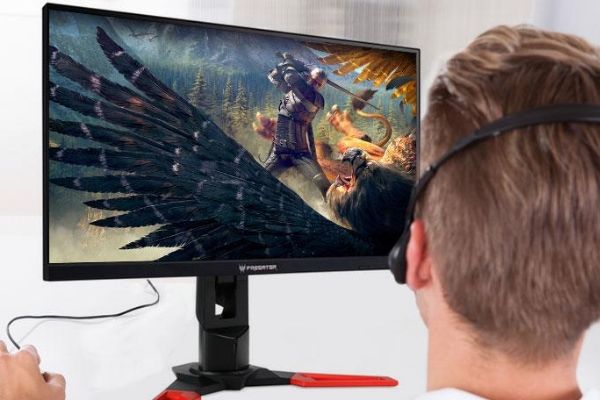
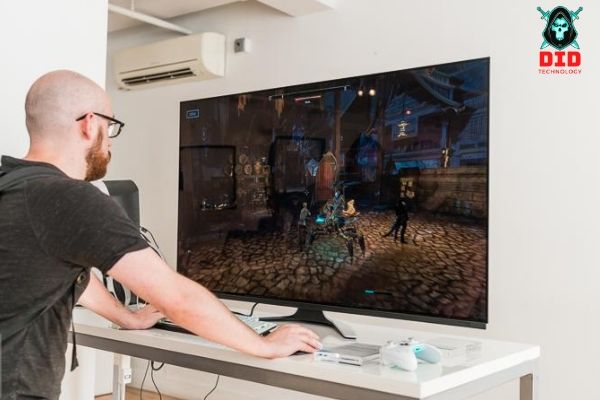
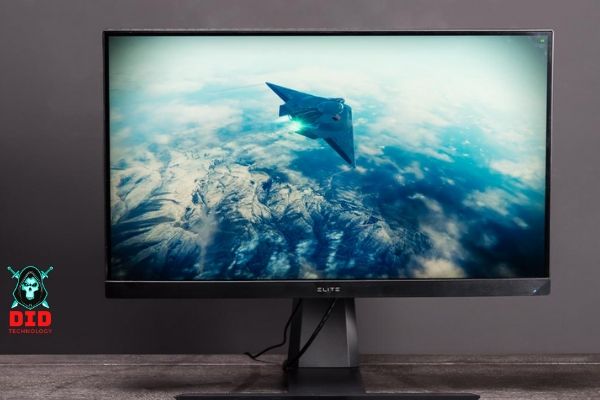
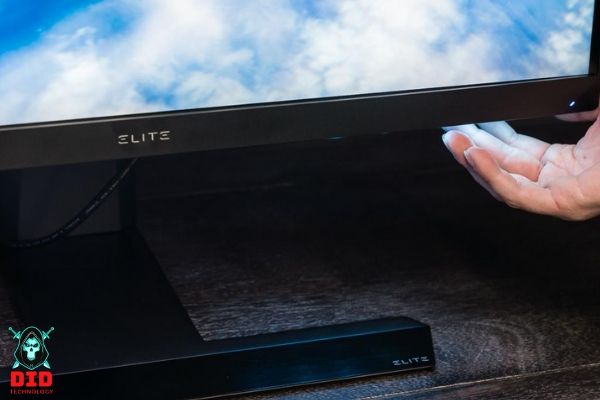
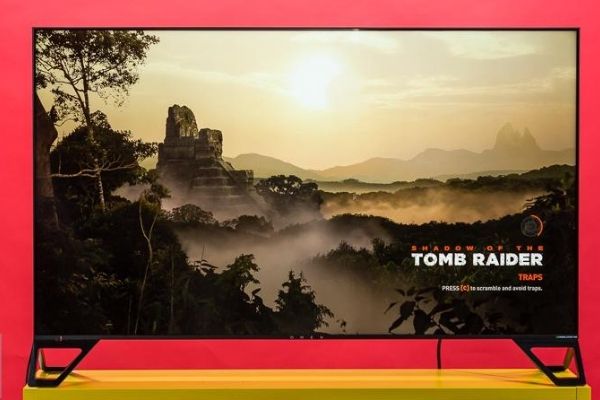
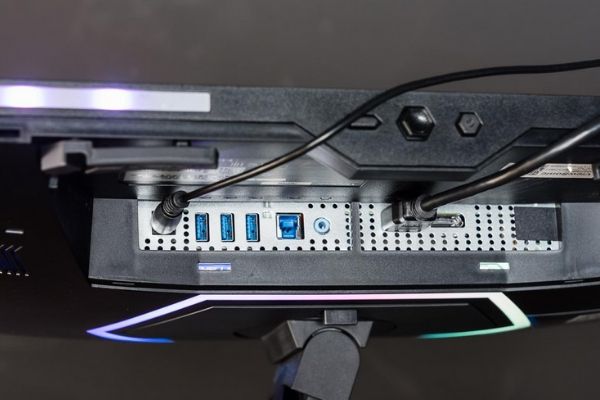
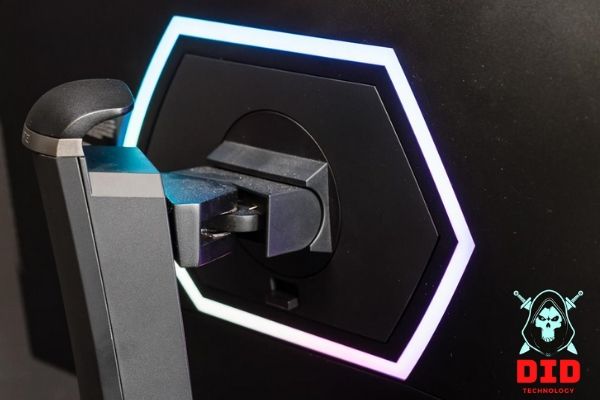
Post a Comment